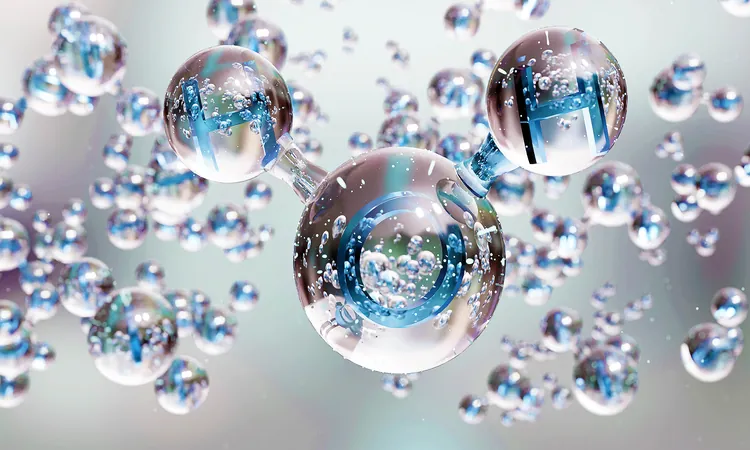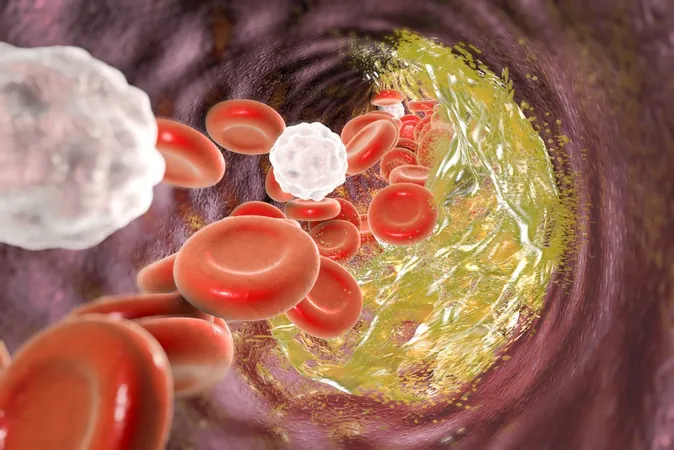
Unlocking the Mysteries: Quantum Secrets of Water Molecules Revealed
2024-10-30
Author: Nur
Unlocking the Mysteries: Quantum Secrets of Water Molecules Revealed
Water is essential for all forms of life, yet the intricacies of its molecular behavior have remained elusive. One of the most profound mysteries lies in understanding how water molecules connect through hydrogen bonds, crucial interactions that contribute to water's unique properties—properties that many of us often take for granted.
Revolutionary Spectroscopy Breakthrough
Significant progress in this area has been made by Dr. Sylvie Roke and her research team at the Swiss Federal Institute of Technology Lausanne (EPFL). They have developed an innovative technique known as correlated vibrational spectroscopy (CVS), which allows for unprecedented observation of water molecules as they form hydrogen bond networks.
With CVS, researchers can now distinguish between water molecules that are participating in hydrogen bonding and those that are not—a feat that previous spectroscopic methods simply could not achieve. Traditional techniques typically measured the collective vibrations of all water molecules, reminiscent of trying to discern a single voice amid loud crowd noise.
The Science Behind Hydrogen Bonds
So, what exactly are hydrogen bonds? Picture water molecules as tiny magnets, each possessing a positive and negative side. These oppositely charged regions naturally draw the molecules together, forming the hydrogen bonds that provide water with remarkable traits such as high surface tension and its solvent capabilities.
Dr. Roke explains that conventional spectroscopy often requires scientists to make educated guesses about molecular interactions. "Current spectroscopy methods measure the scattering of laser light caused by the vibrations of all molecules in a system," she notes. "With CVS, each type of molecule is showcased with its unique signature, allowing us to focus specifically on interactions of interest."
The Technique Behind CVS
To implement this breakthrough, Dr. Roke's team utilized ultra-short laser pulses that last merely a quadrillionth of a second, providing a precise view of the transient movements within water molecules. By slightly adjusting the angle of the detection equipment, they can now collect distinct spectra for both interacting and non-interacting molecules, refining the resolution of their findings.
But the innovation didn't stop there. The researchers also explored how varying water pH through the addition of hydroxide ions or protons affected hydrogen bonding. PhD student Mischa Flór, the first author of the study, stated, “With CVS, we can quantify how many extra charges hydroxide ions contribute to hydrogen bonding networks—an astounding 8%—and how much charge protons absorb—4%—offering precise measurements previously deemed impossible.”
Implications of the Research
The implications of these discoveries extend far beyond the realm of chemistry. Understanding the molecular interactions of hydrogen bonds can significantly impact various fields, including biology, environmental science, and materials science.
For instance, the structure of DNA and the behavior of proteins are heavily influenced by hydrogen bonding. Moreover, CVS has the potential to elucidate molecular-level details in various solutions containing electrolytes, sugars, amino acids, and more. Dr. Roke’s team is already applying CVS to other materials, paving the way for advancements in nanotechnology, drug design, and beyond.
Ever wondered why ice is slippery or how plants manage to transport water from their roots to their leaves? The secrets all lie within the fascinating world of hydrogen bonds, and techniques like CVS will allow us to decipher these phenomena with greater clarity.
A Glimpse into the Future
Dr. Roke and her team's pioneering work opens up new avenues for scientific exploration. As researchers continue to unlock the mysteries of molecular interactions, we may soon witness breakthroughs in technology and medicine that impact our daily lives.
In a world where water is the source of life, understanding its fundamental properties becomes ever more critical. The CVS technique may well be the key to unraveling not just the secrets of water, but also the broader intricacies of life itself.
Their findings are published in the prestigious journal *Science*, marking a significant leap forward in our understanding of one of nature's most vital substances. Stay tuned—more astounding discoveries are on the horizon!



 Brasil (PT)
Brasil (PT)
 Canada (EN)
Canada (EN)
 Chile (ES)
Chile (ES)
 España (ES)
España (ES)
 France (FR)
France (FR)
 Hong Kong (EN)
Hong Kong (EN)
 Italia (IT)
Italia (IT)
 日本 (JA)
日本 (JA)
 Magyarország (HU)
Magyarország (HU)
 Norge (NO)
Norge (NO)
 Polska (PL)
Polska (PL)
 Schweiz (DE)
Schweiz (DE)
 Singapore (EN)
Singapore (EN)
 Sverige (SV)
Sverige (SV)
 Suomi (FI)
Suomi (FI)
 Türkiye (TR)
Türkiye (TR)